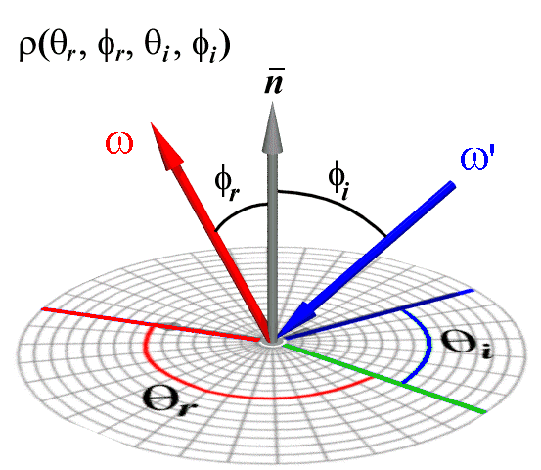
The simpler models of diffuse reflection, specular reflection, and Phong reflection are idealized special cases of the general 4-dimensional BRDF.
Highly anisotropic BRDF: Brushed Aluminum
If we also consider the dependency on wave length, the BRDF becomes 5-dimensional.

A more sophisticated model of reflection also takes into consideration subsurface scattering (important for realistic rendering of faces, or marble statues). In this case photons may make a few bounces inside the matrial before they pop out again; thus they may emerge in a slightly different location from where they entered.
Alabaster Horse, by M. Goesele et al
Face Comparison, by H.W. Jensen et al

